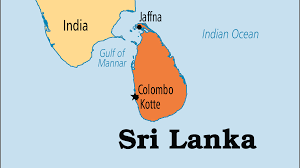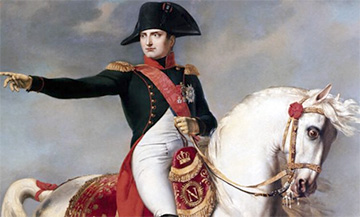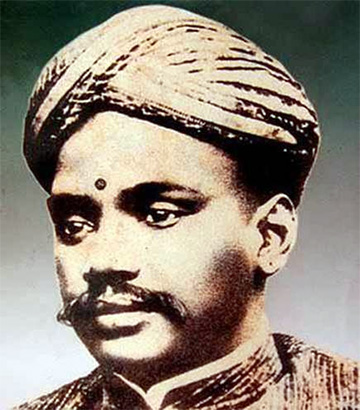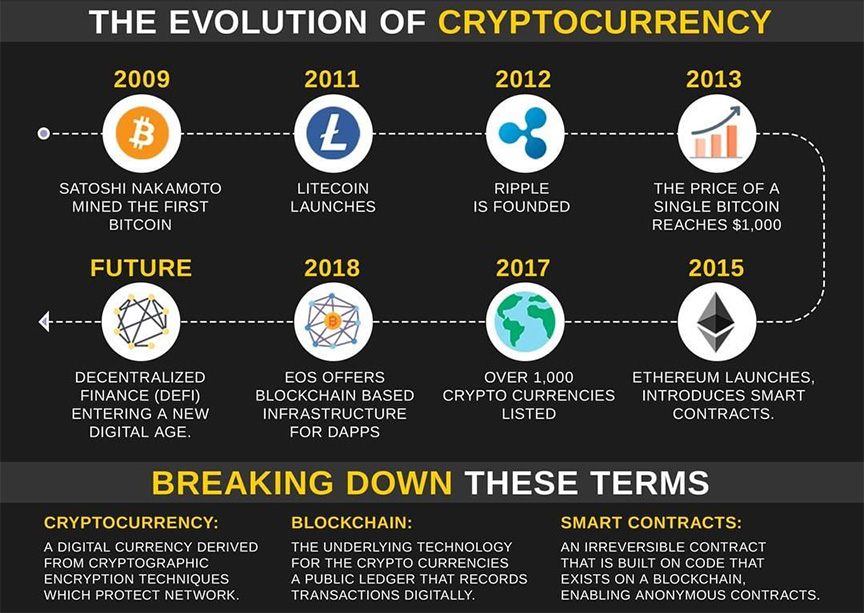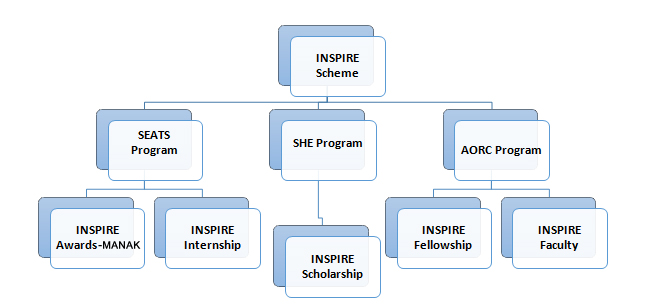Biodiversity & Environment
IUCN World Conservation Congress
Why in News
The world’s largest and most inclusive environmental decision-making forum ‘IUCN World Conservation Congress 2020’ (postponed from June 2020 to September 2021) is being held in Marseille, France.
- It took critical policy decisions to address conservation priorities including the ongoing biodiversity crisis.
- The International Union for the Conservation of Nature (IUCN) conducts the World Conservation Congress which is held every four years in a different location around the globe. The first was conducted in the United States in 1948.
International Union for Conservation of Nature
- It is a membership union uniquely composed of both government and civil society organisations.
- Created in 1948, it is the global authority on the status of the natural world and the measures needed to safeguard it.
- It is headquartered in Switzerland.
- The IUCN Red List of Threatened Species, is the world's most comprehensive inventory of the global conservation status of plant and animal species.
Key Points
- Global Indigenous Agenda:
- It calls for the secure recognition and respect for collective indigenous rights and governance of lands, territories, waters, coastal seas and natural resources.
- It was developed by IUCN’s Indigenous Peoples Organisation Members.
- It lays out 10 high-level proposals and outcomes relating to five themes: Indigenous governance; biodiversity conservation; climate action; post-Covid-19 recovery efforts and food security; and global policy setting.
- IUCN Red List Update:
- No. of Species on Nine Categories: The updated Red List says that despite global improvement at the species level, the number of species that are at high risk continues to grow.
- Some 902 species are officially extinct. 30% of the species that it assessed (138,374) face the threat of extinction.
- Some 80 species are extinct in the wild, 8,404 are critically endangered, 14,647 are endangered, 15,492 are vulnerable and 8,127 are near threatened.
- Some 71,148 species are of least concern, while 19,404 are data deficient.
- The ninth category is ‘Not Evaluated’ - species not assessed by the IUCN.
- Komodo Dragons: Indonesia’s Komodo dragon (Varanus komodoensis) is the world’s largest living lizard and it has been moved from vulnerable to endangered.
- The species is increasingly threatened by the impacts of climate change, with rising sea levels expected to shrink its tiny habitat by at least 30% over the next 45 years.
- Tuna Species: Four of the seven most commercially fished tuna species have shown signs of recovery.
- Atlantic bluefin tuna (Thunnus thynnus) moved from endangered to least concern.
- Southern bluefin tuna (Thunnus maccoyii) moved from critically endangered to endangered.
- Albacore (Thunnus alalunga) and yellowfin tunas (Thunnus albacares), both moved from near threatened to least concern.
- Other tuna species like the bigeye tuna (Thunnus obesus) remain vulnerable while the skipjack tuna (Katsuwonus pelamis) remains least concerned.
- The Pacific bluefin tuna (Thunnus orientalis) moved from vulnerable to near threatened due to the availability of newer stock assessment data and models.
- No. of Species on Nine Categories: The updated Red List says that despite global improvement at the species level, the number of species that are at high risk continues to grow.
- Sustainable Tourism Initiative:
- The programme, which is funded by Germany and includes implementing partners such as United Nations Educational, Scientific and Cultural Organization (UNESCO) and the Worldwide Fund for Nature (WWF).
- It will use tourism as an instrument to contribute to sustainable development in developing and emerging countries.
- To pilot the initiative, IUCN will work with two World Heritage sites and five other protected areas in Peru and Vietnam to increase the resilience of the community-based tourism sector to future disruptions.
- The programme, which is funded by Germany and includes implementing partners such as United Nations Educational, Scientific and Cultural Organization (UNESCO) and the Worldwide Fund for Nature (WWF).
- Other Recent Updates:
- Raptor Species under Threat: According to an analysis by the IUCN and BirdLife International, around 30% of the 557 raptor species around the world are threatened by extinction to some degree.
- Behler Turtle Conservation Award: Recently, Indian biologist Shailendra Singh has been awarded the Behler Turtle Conservation Award for bringing three critically endangered turtle conservation species back from the brink of extinction.
- Co-presented by Turtle Survival Alliance (TSA), IUCN Tortoise and Freshwater Turtle Specialist Group, Turtle Conservancy, and Turtle Conservation Fund.
International Relations
Food Emergency in Sri Lanka
Why in News
Recently, Sri Lankan President, has declared an economic emergency to contain rising food prices, a depreciating currency, and rapidly depleting forex reserves.
- The emergency was declared under the Public Security Ordinance on the supply of essential goods.
Key Points
- Factors Responsible for Sri Lankan Economic Crisis:
- Underperforming Tourism Industry: The tourism industry, which represents over 10% of the country’s Gross Domestic Product and brings in foreign exchange, has been hit hard by the coronavirus pandemic.
- As a result, forex reserves have dropped from over $7.5 billion in 2019 to around $2.8 billion in July 2021.
- Depreciating Currency: With the supply of foreign exchange drying up, the amount of money that Sri Lankans have had to shell out to purchase the foreign exchange necessary to import goods has risen.
- Due to this, the value of the Sri Lankan rupee has depreciated by around 8% so far this year.
- Rising Inflation: Sri Lanka depends heavily on imports to meet even its basic food supplies, such as sugar, dairy products, wheat, medical supplies.
- So the price of food items has risen in tandem with the depreciating rupee.
- Diminishing Inflow of Foregin Currency: The pandemic has affected all major sources of foreign exchange earnings like exports, worker remittances, etc.
- Food Shortage: Sri Lankan Government’s recent decision to ban import of chemical fertilizers and adopt an “organic only” approach.
- This overnight shift to organic fertilizers could impact food production severely.
- Underperforming Tourism Industry: The tourism industry, which represents over 10% of the country’s Gross Domestic Product and brings in foreign exchange, has been hit hard by the coronavirus pandemic.
- Measures Taken Under Emergency Crisis:
- The emergency provisions allow the government to dictate retail prices for essential food items and seize stocks from traders.
- The emergency law enables authorities to detain people without warrants, seize property, enter and search any premises, suspend laws and issue orders that cannot be questioned in court.
- Further, officials who issue such orders are also immune from lawsuits.
- The military will oversee the action which gives power to officials to ensure that essential items are sold at government-guaranteed prices.
- Criticism of the Move:
- The danger is that given the present government’s propensity to stifle dissent, emergency regulations would be used to curb protests and other democratic action.
- Sri Lanka does not have a universal public distribution system or ration cards that can ensure essential goods reach all consumers.
- The current regulations do not address its fundamental economic problem, and instead pose the risk of creating black market.
- There are concerns over the increasing militarization of state institutions.
- This economic emergency in Sri Lanka is very different from the Financial emergency under the Indian Constitution.
Financial Emergency under the Indian Constitution
- Grounds of Declaration: Article 360 empowers the president to proclaim a Financial Emergency if he is satisfied that a situation has arisen due to which the financial stability or credit of India or any part of its territory is threatened.
- Parliamentary Approval and Duration: A proclamation declaring financial emergency must be approved by both the Houses of Parliament within two months from the date of its issue.
- Once approved by both the houses of Parliament, the Financial Emergency continues indefinitely till it is revoked.
- Effects of Financial Emergency:
- Extension of the executive authority of the Union over the financial matters of the States.
- Reduction of salaries and allowances of all or any class of persons serving in the State.
- Reservation of all money bills or other financial bills for the consideration of the President after they are passed by the legislature of the State.
- Direction from the President for the reduction of salaries and allowances of all or any class of persons serving the Union; and the judges of the Supreme Court and the High Courts.
World History
Napoleon Bonaparte
Why in News
A newly discovered hat with DNA evidence proving it belonged to Napoleon Bonaparte has gone on display at an auction house in Hong Kong.
Key Points
- Brief Profile:
- Born on 15th August, 1769, in Ajaccio, on the Mediterranean island of Corsica.
- Also known as Napoleon I.
- A French military leader and emperor who conquered much of Europe in the early 19th century.
- Crowned himself emperor in 1804.
- Died on 5th May, 1821, on the island of St. Helena.
- Born on 15th August, 1769, in Ajaccio, on the Mediterranean island of Corsica.
- Rise of Napoleon Bonaparte:
- French Revolution: Napoleon Bonaparte rapidly rose through the ranks of the military during the French Revolution .
- He is considered a child of the French Revolution (1789-1799).
- As a young leader he quickly showed his support for the Jacobins, a far-left political movement and the most well-known and popular political club from the French Revolution.
- He fought in the French Revolutionary Wars and was promoted to brigadier general in 1793.
- Treaty of Campo Formio (1797): After victories against the Austrians in northern Italy, he negotiated the Treaty of Campo Formio.
- Battle of the Nile (1798): He attempted to conquer Egypt (1798–99) but was defeated by the British under Horatio Nelson in the Battle of the Nile.
- The Coup of 18 Brumaire (1799): In this event, Napoleon was part of a group that successfully overthrew the French Directory.
- The Directory was replaced with a three-member Consulate, Napoleon became first consul, making him France’s leading political figure.
- Battle of Marengo (1800): Napoleon’s forces defeated one of France’s perennial enemies, the Austrians, and drove them out of Italy.
- The victory helped cement Napoleon’s power as first consul.
- Additionally, with the Treaty of Amiens in 1802, the war-weary British agreed to peace with the French (although the peace would only last for a year).
- French Revolution: Napoleon Bonaparte rapidly rose through the ranks of the military during the French Revolution .
- The Reign of Napoleon Bonaparte:
- Napoleonic Wars: From 1803 to 1815, France was engaged in the Napoleonic Wars, a series of major conflicts with various coalitions of European nations.
- Louisiana Purchase: In 1803, partly as a means to raise funds for future wars, Napoleon sold France’s Louisiana Territory in North America to the newly independent United States for $15 million, a transaction that later became known as the Louisiana Purchase.
- Battle of Trafalgar: In October 1805, the British wiped out Napoleon’s fleet at the Battle of Trafalgar.
- However, in December of that same year, Napoleon achieved what is considered to be one of his greatest victories at the Battle of Austerlitz.
- His army defeated the Austrians and Russians.
- The victory resulted in the dissolution of the Holy Roman Empire and the creation of the Confederation of the Rhine.
- However, in December of that same year, Napoleon achieved what is considered to be one of his greatest victories at the Battle of Austerlitz.
- Reforms Initiated By Napoleon:
- Napoleonic Code: On 21st March, 1804, Napoleon instituted the Napoleonic Code, otherwise known as the French Civil Code, parts of which are still in use around the world today.
- It forbade privileges based on birth, allowed freedom of religion, and stated that government jobs must be given to the most qualified.
- It included criminal code, military code & code of civil procedure and commercial code.
- The Napoleonic Code followed Napoleon's new constitution, which created the first consul.
- First consul was a position which amounted to nothing less than a dictatorship.
- Abolished Serfdom and Feudalism: Napoleon Bonaparte abolished “serfdom and feudalism” in the country in order to make the people free.
- Serfdom, a condition in medieval Europe in which a tenant farmer was bound to a hereditary plot of land and to the will of his landlord.
- Feudalism was the system in 10th-13th century European medieval societies where a social hierarchy was established based on local administrative control and the distribution of land into units (fiefs).
- Education: Napoleon set up an elaborate system of schools, called lycées, which is still in use, and was a proponent for universal education.
- Napoleonic Code: On 21st March, 1804, Napoleon instituted the Napoleonic Code, otherwise known as the French Civil Code, parts of which are still in use around the world today.
- Fall of Napoleon:
- Continental System: It was the blockade designed by Napoleon to paralyze Great Britain through the destruction of British commerce; it proved largely ineffective and eventually led to Napoleon's fall.
- Peninsular War (1807–1814): It was the military conflict fought by Spain, the United Kingdom and Portugal against the invading and occupying forces of France for control of the Iberian Peninsula during the Napoleonic Wars.
- Invasion of Russia: Napoleon hoped to compel Tsar Alexander I of Russia to cease trading with British merchants through proxies in an effort to pressure the United Kingdom to sue for peace. The official political aim of the campaign was to liberate Poland from the threat of Russia.
- The great French dominion collapsed rapidly after the disastrous invasion of Russia in 1812. Napoleon failed to conquer Russia in 1812 for several reasons: faulty logistics, poor discipline, disease, and not the least, the weather.
- Napoleon was defeated in 1814 and exiled to the island of Elba, before returning and was finally defeated in 1815 at Waterloo.
Indian History
V. O. Chidambaram Pillai
Why in News
Recently, the Prime Minister paid tribute to V. O. Chidambaram Pillai, the legendary freedom fighter on his 150th birth anniversary.
- He was popularly known as Kappalottiya Tamilan (The Tamil Helmsman) and Sekkizuththa Semmal (scholarly gentry who suffered at the oil press).
Key Points
- Birth:
- Vallinayagam Olaganathan Chidambaram Pillai (VOC) was born 5th September 1872 to an eminent lawyer Olaganathan Pillai and Paramyee Ammai in Ottapidaram, Tirunelveli district of Tamil Nadu.
- Early Life:
- VOC graduated from Caldwell College, Tuticorin. Before beginning his law studies, he worked for a brief period as the taluk office clerk.
- His tussle with the judge forced him to seek fresh pastures at Tuticorin in 1900.
- Until 1905, professional and journalistic activities consumed most of his energy.
- Entry in Politics:
- VOC entered politics in 1905 following the partition of Bengal.
- Towards the end of 1905, VOC visited Madras and was drawn closer to the Swadeshi Movement initiated by Bal Gangadhar Tilak and Lala Lajpat Rai.
- VOC was drawn towards Ramakrishna Mission and came into contact with Subramania Bharati and the Mandayam family.
- It was not until the arrival of VOC at Tuticorin (Present day Thoothukudi) that the Swadeshi movement in Tirunelveli district began to gather force and momentum.
- VOC entered politics in 1905 following the partition of Bengal.
- Role Played in Freedom Movement:
- By 1906, VOC won the support of merchants and industrialists in Tuticorin and Tirunelveli for the idea of establishing a Swadeshi merchant shipping outfit by the name of the Swadeshi Steam Navigation Company (SSNCo).
- He established many institutions like Swadeshi Prachar Sabha, Dharmasanga Nesavu Salai, National Godown, Madras Agro-Industrial Society Ltd and Desabimana Sangam.
- VOC and Siva were aided in their efforts by a number of Tirunelveli-based lawyers, who formed an organisation called the Swadeshi Sangam, or ‘National Volunteers’.
- The nationalist movement acquired a secondary character with the beginning of the Tuticorin Coral Mills strike (1908).
- Even prior to Gandhiji’s Champaran Satyagraha (1917), VOC took up the cause of the working class in Tamil Nadu, and thus he is a forerunner to Gandhiji in this respect.
- VOC, along with other leaders, resolved to take out a mammoth procession on the morning of 9th March 1908 to celebrate the release of Bipin Chandra Pal from jail and to hoist the flag of Swaraj.
- By 1906, VOC won the support of merchants and industrialists in Tuticorin and Tirunelveli for the idea of establishing a Swadeshi merchant shipping outfit by the name of the Swadeshi Steam Navigation Company (SSNCo).
- Writings: Meyyaram (1914), Meyyarivu (1915), Anthology (1915), Thirukural with literary notes of Manakudavar (1917), Tholkappiam with literary notes of Ilampooranar (1928), Autobiography (1946).
- Death: V.O.C died on 18th November 1936 in the Indian National Congress Office at Tuticorin as was his last wish.
Indian Economy
Crypto Finance
Why in News
The development of Bitcoin and other Cryptocurrencies in a decade has changed the definition of money and generated a parallel universe of Alternative Financial Services (AFS).
- The development has allowed crypto businesses to move into traditional banking territory.
- AFS is a term often used to describe the array of financial services offered by providers that operate outside of federally insured banks and thrifts.
Key Points
- Alternative Services Offered by Crypto:
- About: Most notably, lending and borrowing.
- Advantages over Banks: Investors can earn interest on their holdings of digital currencies - often a lot more than they could on cash deposits in a bank - or borrow with crypto as collateral to back a loan.
- Reason: By law, banks are required to have reserves to ensure that even if some loans go bad, customers can still withdraw funds, whereas crypto banks do not have the same reserve requirements and the institutions they lend to can take risky activities.
- Risks: Deposits are not guaranteed by the central bank’s backed Deposit Insurance Corp. Cyberattacks, extreme market conditions, or other operational or technical difficulties could lead to a temporary or permanent halt on withdrawals or transfers.
- Stablecoin:
- They are cryptocurrencies pegged to stable assets, commonly the dollar. They are meant to provide the steady value of government-issued money in digital form for blockchain transactions, but they are issued by private entities.
- Crypto is very volatile, making it less practical for transactions like payments or loans. That’s where stablecoins come in.
- Stablecoin issuers are supposed to hold and monitor reserves as government institutions do. But there is no guarantee they actually hold the one-to-one dollar backing they claim.
- They are cryptocurrencies pegged to stable assets, commonly the dollar. They are meant to provide the steady value of government-issued money in digital form for blockchain transactions, but they are issued by private entities.
- Central Bank Digital Currency:
- It is the virtual format of a fiat currency (issued by the government and regulated by a central authority such as a central bank) for a particular nation or region.
- Central bankers are examining the potential for issuance of a government-issued cryptocurrency. That would theoretically offer the convenience of crypto with the reliability of money controlled by a central bank.
- Many countries, including the US and India, are considering developing a central bank digital currency.
- Decentralized Finance:
- Decentralized finance, or DeFi, loosely describes an alternative finance ecosystem where consumers transfer, trade, borrow and lend cryptocurrency, theoretically independently of traditional financial institutions and the regulatory structures.
- The DeFi movement aims to “disintermediate” finance, using computer code to eliminate the need for trust and middlemen from transactions.
- DeFi platforms are structured to become independent from their developers and backers over time and to ultimately be governed by a community of users.
- Benefits of Crypto Finance:
- Financial Inclusion:
- Innovators argue that crypto fosters financial inclusion. Consumers can earn unusually high returns on their holdings, unlike at banks.
- Quick and Cheap Transactions:
- Crypto finance gives people long excluded by traditional institutions the opportunity to engage in transactions quickly, cheaply and without judgment.
- As crypto backs their loans, the services generally require no credit checks, although some take customer identity information for tax reporting and anti-fraud purposes.
- On a DeFi protocol, users’ personal identities are generally not shared, since they are judged solely by the value of their crypto.
- Financial Inclusion:
Way Forward
- New technology demands a new approach; novel risks can be addressed without necessarily restricting innovation.
- For example, instead of mandating that DeFi protocols maintain the reserves of a bank and collect customer information, officials might create new kinds of requirements devised for the technology and products, like code audits and risk parameters.
- Questions of identity, which are crucial to fighting financial fraud, need to be addressed. Instead of starting with specifics — collecting the identity of individuals — law enforcers could take the broad view.
- Using artificial intelligence and data analysis to monitor suspicious activity and working back to track identity.
Indian Polity
Common Services Centres (CSC)
Why in News
Recently, the Common Services Centres (CSC) has received approvals to manage and operate Passport Seva Kendra kiosks in rural areas.
Key Points
- About CSC:
- It is an initiative of the Ministry of Electronics & IT (MeitY).
- The CSC is a strategic cornerstone of the National e-Governance Plan (NeGP), approved by the Government in May 2006, as part of its commitment in the National Common Minimum Programme to introduce e-governance on a massive scale.
- The objective of CSCs is to provide high quality and cost-effective video, voice and data content and services, in the areas of e-governance, education, health, telemedicine, entertainment as well as other private services.
- The Scheme creates a conducive environment for the private sector and NGOs to play an active role in implementation of the CSC Scheme, thereby becoming a partner of the government in development of rural India.
- The PPP (Public Private Partnership) model of the CSC scheme envisages a 3-tier structure consisting of the:
- CSC operator (called Village Level Entrepreneur or VLE);
- Service Centre Agency (SCA), that will be responsible for a division of 500-1000 CSCs; and
- State Designated Agency (SDA) identified by the State Government responsible for managing the implementation in the entire State.
- CSC and Digital India:
- Digital India is a flagship programme of India with a vision to transform India into a digitally empowered society and knowledge economy.
- CSCs enable the three vision areas of the Digital India programme:
- Digital infrastructure as Utility to Every Citizen.
- Governance and services on demand.
- Digital empowerment of citizens.
- CSC 2.0:
- It was launched in 2015, expanding the programme's outreach to all gram panchayats in the country. At least one CSC is envisaged in each of the 2.5 lakh Gram Panchayats.
- CSC 2.0 is a service delivery oriented entrepreneurship model with a large bouquet of services made available for the citizens through optimum utilization of infrastructure already created in the form of State Wide Area Network (SWAN), State Service Delivery Gateway (SSDG), e-District, State Data Centre (SDC), and (National Optical Fiber Network (NOFN)/BharatNet.
Governance
INSPIRE Awards-MANAK
Why in News
Recently, the 8th National Level Exhibition and Project Competition (NLEPC) for the INSPIRE Awards – MANAK (Million Minds Augmenting National Aspiration and Knowledge), has commenced.
Key Points
- About:
- It is aligned with the ‘Start-up India’ initiative and is being executed by DST (Department of Science and Technology) with National Innovation Foundation – India (NIF), an autonomous body of DST.
- Under the scheme the students are invited from all government or private schools throughout the country, irrespective of their educational boards (national and state).
- It covers the students in the age group of 10-15 years and studying in classes 6 to 10, to pursue Science and a career in Research.
- An award of Rs.10,000 is disbursed into bank accounts of winning students under Direct Benefit Transfer scheme.
- It does not believe in conducting competitive exams for identification of talent at any level. It believes in and relies on the efficacy of the existing educational structure for identification of talent.
- Aim:
- To motivate students to become future innovators and critical thinkers.
- Objectives:
- To target one million original ideas/innovations rooted in science and societal applications to foster a culture of creativity and innovative thinking among school children.
- To address the societal needs through science and technology and nurture them to become sensitive and responsible citizens and innovation leaders of tomorrow.
- INSPIRE Scheme:
- The INSPIRE (Innovation in Science Pursuit for Inspired Research) scheme is one of the flagship programmes of the Ministry of Science and Technology & Earth Sciences.
- Its objective is to communicate to the youth population of the country the creative pursuit of science and attract talent to the study of science at an early stage and build the required critical human resource pool for strengthening and expanding the Science & Technology system and Research & Development base.
- The Government of India has successfully implemented the INSPIRE scheme since 2010. The scheme covers students in the age group of 10-32 years and has five components.
- The INSPIRE Awards- MANAK is one of its components.
- Related Initiatives:
- Draft National Science Technology and Innovation Policy, 2020:
- Its aim is to identify and address strengths and weaknesses of the Indian Science Technology and Innovation (STI) ecosystem to catalyse socio-economic development of the country and also make the Indian STI ecosystem globally competitive.
- SERB-POWER Scheme:
- It is a scheme designed exclusively for women scientists to mitigate gender disparity in science and engineering research in various science and technology (S&T) programmes in Indian academic institutions and Research and Development (R&D) laboratories.
- Swarna Jayanti Fellowship:
- It provides special assistance and support to a selected number of young scientists with a proven track record to enable them to pursue basic research in frontier areas of science and technology.
- Draft National Science Technology and Innovation Policy, 2020:
Important Facts For Prelims
Manda Buffalo: Odisha
Why in News
The Manda buffalo has been recognised as the 19th unique breed of buffaloes found in India by the National Bureau of Animal Genetic Resources (NBAGR).
- Four breeds of cattle - Binjharpuri, Motu, Ghumusari and Khariar - and two breeds of buffalo - Chilika and Kalahandi - and one breed of sheep, Kendrapada, have already received NBAGR recognition.
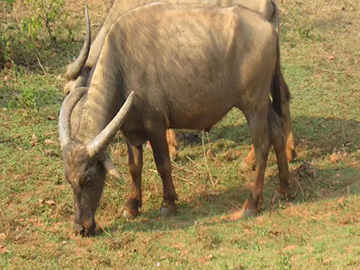
Key Points
- Manda:
- Habitat:
- They are found in the Eastern Ghats and plateau of Koraput region of Odisha.
- The small, sturdy buffaloes are used for ploughing in their native habitat.
- Characteristics:
- These buffaloes have ash grey and grey coats with copper-coloured hair. Some animals are silver white in colour.
- Speciality of the Breed:
- The Manda are resistant to parasitic infections, less prone to diseases and can live, produce and reproduce at low or nil input systems.
- Habitat:
- Significance of Recognition:
- The state and the Centre will make efforts to conserve this unique buffalo genetic resource of Odisha and enhance their productivity through breeding strategy.
- The governments will help in marketing the produce- milk, curd and ghee at a premium price resulting in the improvement of the livelihood of the stakeholders in the native tract.
- NBAGR:
- Indian Council of Agricultural Research (ICAR) -National Bureau of Animal Genetic Resources, Karnal (ICAR-NBAGR) is the nodal agency for the registration of newly identified germplasm of livestock and poultry of the country.
- Its mandate includes Identification, Evaluation, Characterization, Conservation and sustainable Utilization of Livestock and Poultry Genetic Resources.
Important Facts For Prelims
DefExpo-2022
Why in News
The 12th edition of DefExpo will be held in Gandhinagar, Gujarat in March 2022.
Key Points
- About:
- DefExpo is a flagship biennial event of the Ministry of Defence, showcasing the land, naval, air as well as homeland security systems.
- The aim of the DefExpo 2022 is to build upon the vision to achieve Atmanirbharta’ in defence and reach the $5bn defence exports target by 2024.
- The 11th edition of DefExpo was held at Lucknow (Uttar Pradesh) in 2020.
- Defence Sector Reforms Under Atmanirbhar Bharat Abhiyan:
- Revision of FDI Limit: The FDI limit in defence manufacturing under automatic route is raised from 49% to 74%.
- Project Management Unit (PMU): The government is expected to begin time-bound defence procurement and faster decision making by setting up a Project Management Unit (for contract management purposes).
- Reduction in Defence Import Bill: The government will notify a list of weapons/platforms banned for imports and thus such items can only be purchased from the domestic market.
- Separate budget provision for domestic capital procurement.
- Corporatisation of the Ordnance Factory Board: It will include a public listing of some units, ensuring a more efficient interface of the manufacturer with the designer and end-user.
Important Facts For Prelims
India’s Tallest Air Purifier: Chandigarh
Why in News
India’s tallest air purifier will be inaugurated in Chandigarh on the International Day of Clean Air for Blue Skies.
- Earlier, in August 2021 country's first 'smog tower’ was inaugurated in Connaught Place, New Delhi.
Key Points
- About:
- It is a 24 meter long outdoor air purification tower and is capable of purifying the air of a radius of around 1 km.
- It will also show the quality index of the air it inhales and the quality index of the air it will exhale. It functions through electricity.
- Air purifiers are structures designed as large-scale air purifiers to reduce air pollution particles.
- Chandigarh is one of the non-attainment cities in the country according to National Clean Air Programme (NCAP) norms, which means it has over a five-year period not consistently met the National Ambient Air Quality Standards (NAAQS) for harmful PM 10 (particulate matter that is 10 microns or less in diameter), PM 2.5 or NO2 (nitrogen dioxide).
- After remaining “satisfactory” and “moderate” during the lockdown period and a few months after, the Air Quality Index (AQI) had again turned “poor” for the first time in November 2020.
- International Day of Clean Air for Blue Skies:
- The United Nations General Assembly (UNGA) in December 2019, adopted a resolution by which 7th September became the International Day of Clean Air for blue skies.
- It aims to prioritize the need for healthy air for all while keeping conversations broad enough to encompass other critical issues such as climate change, human and planetary health as well as the Sustainable Development Goals.
- The resolution was adopted in recognition of the necessity to bring down the number of casualties and ailments from pollutants like chemicals in the air, water and soil by the year 2030.
- For 2021 the theme is Healthy Air, Healthy Planet.

